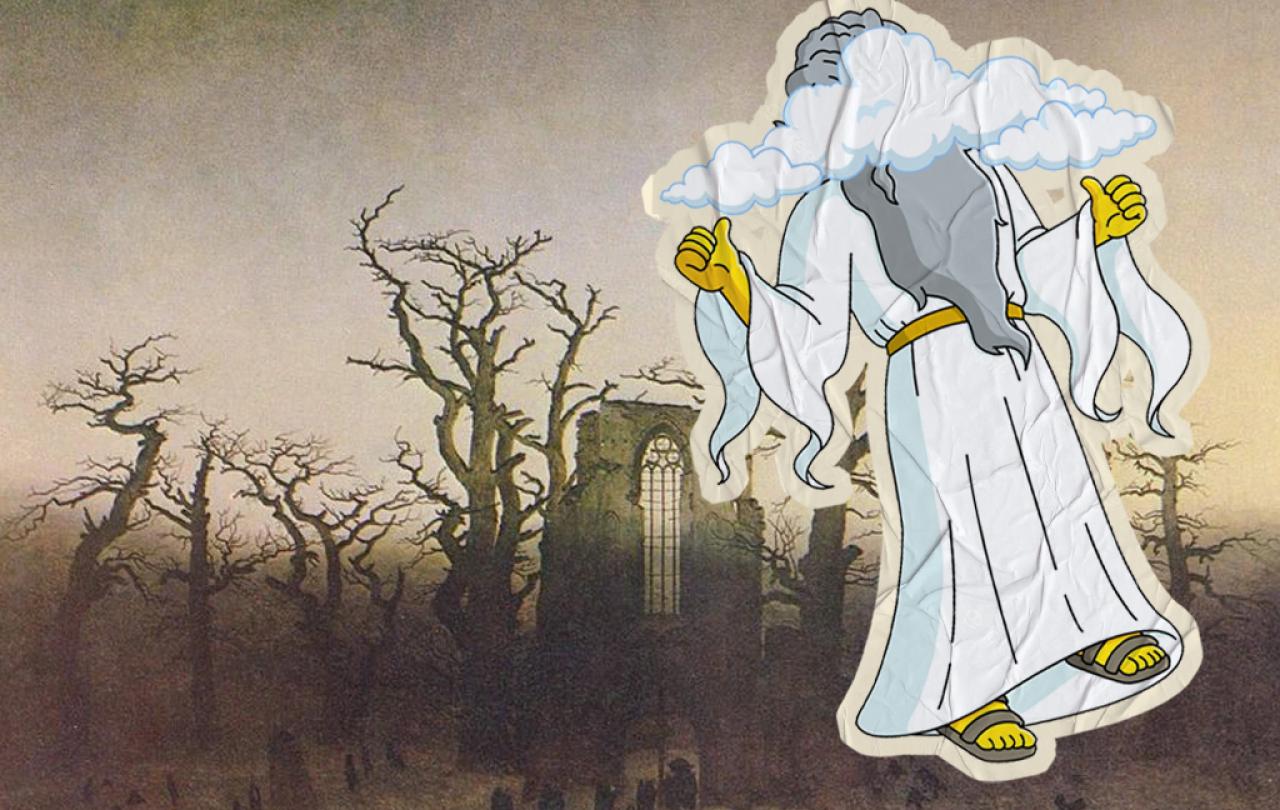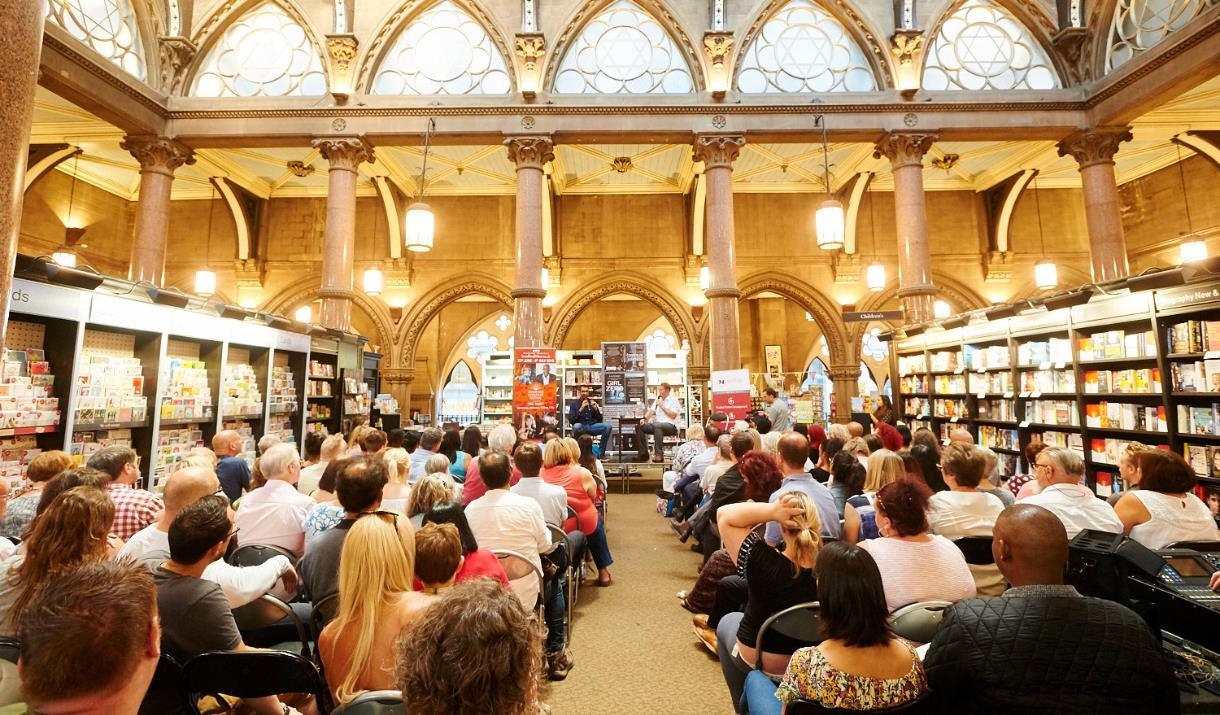
My name is Stefani. I was a committed atheist for almost my entire life. I studied religion to try to figure out how to have spiritual fulfillment without God. I tried writing books on spirituality for agnostics and atheists, but I gave up because the answers were terrible. Two years after completing my PhD, I finally realised that that’s because the answer is God.
Today, I explain how and why I decided to walk into Christian faith.
Here at Seen & Unseen I am publishing a six-article series highlighting key turning points or realisations I made on my walk into faith. It tells my story, and it tells our story too.
I began having panic attacks about dying and the meaning of life when I was four years old. I would lay in bed at night and beat my head against the mattress while imagining what it would be like to stop existing. What would it be like to cease to be? I had no idea, but it seemed too horrible to fathom. I literally tore my hair out with the dread of it.
Like many people in my generation, my parents had been raised in the church but left it as soon as they were able. They raised my brothers and me completely without God or other spiritual things. I had no idea of anything beyond what we could see or touch. My first exposure to God was through the TV, as He makes a few guest appearances on The Simpsons.
As a child raised in today’s world, God was what Charles Taylor calls “unthinkable” to me. By “unthinkable” he means literally unthinkable. It was impossible for me to think God; it remains difficult for me to think God. But here’s the thing: this unthinkability of God—the sheer impossibility, the ridiculousness, the strangeness, the preposterousness of God, to me—was a bias I inherited from being born into this specific place and time.
I was pre-wired to disbelieve in God.
The thing is, every society is founded on tacit assumptions about the nature of reality. Ours, the modern West, assumes that nothing is real except for physical stuff. Philosopher Charles Taylor calls this the immanent frame. Inside the immanent frame, you can, if you like, believe in more than just what we can see and touch. But that’s a choice, and it’s one you make while others consider the things you hold most sacred as like cartoon characters lounging on clouds in the sky. Such beliefs are difficult to maintain with grace, and people often hold them with either too much timidity or too much obstinacy; many, like my parents, eschew belief altogether. This is a recipe for a tumultuous, confusing, and often unfriendly spiritual landscape.
The great existential trade-off
We are the first society in the history of societies to be founded on nothingness. A child born 500 years ago would not have been able to imagine a world without God. Back then, God was not just real but number one on the list of possibly real things. Atheism was unthinkable. God was the singular, unchanging reality upon which all material things—constantly changing and subject to decay and death—depended. You can read a little about what it was like in this review of Pentiment, an adventure game set in medieval Bavaria.
Today, faith is, even for Christians, typically cordoned off in a little corner of life, maybe squeezed into 15 minutes on a Bible app on the way to work. But back then faith was what scholar Timothy Fitzgerald appropriately labels encompassing. God was not a hypothesis to be posed, a belief into which you could opt. God suffused the world. The transcendent encompassed all.
Here’s how it flipped.
In 1451 Johannes Gutenberg invented the printing press, which made printing books faster and cheaper than ever before. New ideas about God began to spread faster than the then dominant Church could stomp them out. Within a lightning-quick five hundred years, the number of versions of the faith in Europe multiplied from one to literal thousands.
No one was prepared for the shock of it all. People began to differentiate themselves according to their beliefs, and authorities exploited burgeoning fault lines for the sake of conflict. Between 1517 and 1648, ten million people died in the Wars of Religion.
The things that seem the most real to us are those we share and discuss. The whole realm of the transcendent began to lose its status as unshakably real.
What was to be done? Philosophers like John Locke offered a solution: separate the church and the state. That seemed simple enough. And in some ways, it was. But this meant our European ancestors stopped sharing and talking about their beliefs in public. The problem is that humans are social animals. The things that seem the most real to us are those we share and discuss. The whole realm of the transcendent began to lose its status as unshakably real.
Over time, people discussed their fundamental beliefs less and less. Society even developed the notion that sharing beliefs at social gatherings like dinner parties is impolite. So religious beliefs became deeply private things, and it started to seem like people were choosing to believe them due to personal feelings or needs. This eventually made it seem to many that beliefs were mere wishful thinking—flights of fancy, silly, and weak.
On the opposing side, people who abstained from religious belief started to see their nonbelief as noble resistance to the temptations of wishful thinking. The idea was that being willing to view the universe as cold and uncaring was the difficult but right and brave thing to do. Nobody wants to seem weak, and everybody wants to seem noble. The transcendent faded out of our collective consciousness.
Or, to use Nietzsche’s terms, God died.
Thus, God and material things swapped places in our understanding of reality. God, once the most real thing in existence, became something you could believe in if you felt like it. Material things, once viewed as constantly decaying and thus only real through God, became the unquestionably real.
This isn’t normal, we weren’t made for this. We weren’t made to live without hope or homecoming or a bigger story of which we are a part.
Today, the immanent frame reigns. But it’s not inert. It has its own compulsive, even hypnotic, powers, arguably with as strong a grip on our souls as God once had. It locks our attention on the here-and-now (as that’s all there is), and in doing so elevates the status of things like food, fashion, and entertainment in our quests for fulfillment. We throw ourselves into pleasure, hoping for relief. But immanence leads nowhere except back into itself, like an Ouroboros, the snake that eats its own tail.
Immanence is so pervasive we take for granted that this is just the way things are. And yet young children do things like tear their hair out trying to make sense of what seems like an absurd existence. This isn’t normal. We weren’t made for this. We weren’t made to live without hope or homecoming or a bigger story of which we are a part. Characters in today’s novels are always buying sportscars and asking Is this all there is? Maybe it’s not.
What if all of us are grasping at the same ultimate truth, getting little bits of it right and wrong?
Betting on transcendence
My panic attacks made me obsessed with finding answers. The horror I felt at living in a cold and dark universe was relentless. But I also couldn’t lie to myself. A solution wouldn’t be real if it were imaginary. So as much as I wished I could believe in God, I couldn’t.
When I learned this history of immanence however, I realised that my automatic inclination to disbelief was a bias—an inheritance of our culture, and nothing more.
I then asked myself:
What if, as our culture sloughed off the transcendent, it didn’t move into greater nobility, truth, and progress like it tells itself, but pre-emptively gave up on the most important thing in existence? What if all of us are grasping at the same ultimate truth, getting little bits of it right and wrong? What if some of us are on the right path, exploring relationship with a Creative power beyond our imagining that loves us, helps us, saves us?
The fact is, when it comes to transcendence, we don’t know what’s true. No one knows with certainty.
But we do know that immanence is a bias. And we know the first step to finding the truth is to free ourselves from bias. We must identify and untangle presumptions, then rebuild our mental frameworks as carefully as we are able.
As for me, I’ve spent more than a decade in the academy doing this work. And in the end? Spoiler alert: I’ve thrown my hat in with transcendence.






